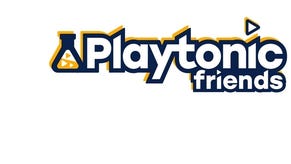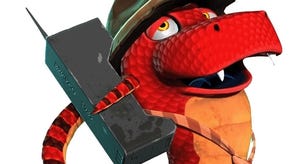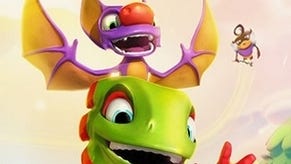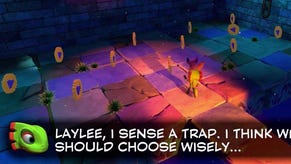The wait was worth it for Yooka-Laylee on Switch
Refined and optimised.
After months of anticipation, Yooka-Laylee has finally arrived on Switch and it feels right at home. Playtonic's debut is a sprawling platformer with a focus on exploration and the jump to modern hardware has enabled its designers to create worlds much larger and more complex than the games which inspired it. And that's precisely why there has been some trepidation leading up to its release on Nintendo's hybrid. After all, Yooka-Laylee is a large-scale Unity game on the Switch and while we've seen a lot of Unity titles on the system since its launch, the average performance level hasn't always been optimal, even in relatively simple games.
After handing PS4 and Xbox One conversion duties for the original release to Team 17, Playtonic itself handles the Switch conversion and it's clearly a lovingly crafted piece of work - and worry not, the quality of the visual feature set and performance level is generally excellent. What's interesting about this port is the approach: rather than brute-force PS4 and Xbox One assets into the Switch version, Playtonic has crafted brand new 3D art where required, better suited to the system's overall power level. On top of that, there are nips and tucks, but they're intelligently handled. Unless you're carrying out side-by-side comparisons, you'll struggle to tell the difference.
Of course, we've done just that, but rather than serve to the detriment of the new version, it only serves to highlight how much effort was poured into tweaking the visuals and presentation for the platform. On top of that, this is also the latest iteration of Yooka-Laylee, including various tweaks and changes designed to smooth out the experience. The camera system is improved, and the overall game simply feels more polished and buttoned up all around.
So how about the basics then? We've known for a while now that Yooka-Laylee on Switch would target a lower resolution than the PS4 and Xbox One versions and that's precisely the case. In docked mode, it operates at 900p, while portable resolves at 600p [UPDATE: Playtonic has been in touch to say that portable mode checks out at 630p]. It's a good compromise for the system that strikes a reasonable balance between image quality and performance, especially in mobile mode where the game manages to look quite clean despite the sub-native resolution.
The nips and tucks we mentioned are apparent across the scene, but the overall presentation is still very close to the original release. The subtle use of depth of field used on distant scenery is now absent on Switch - a change which makes sense considering the impact this effect can have on fill-rate. Shadow map resolution is also reduced, but this is offset by smooth filtering to prevent them looking chunky, and shadow draw distance remains unchanged. In common with other Switch titles we've tested, ambient occlusion also gets cut, which does have a minor impact on the look and feel of certain levels.
Lighting has been modified in many scenes as well. It was necessary to reduce the number of reflection probes on the Switch and this difference can certainly be observed in specific areas like the hub area. In the end though, it simply looks different rather than worse. More surprisingly, certain objects and chunks of base geometry have been modified for the Switch version with simpler iterations. Again, this works because for the vast majority of gameplay, it's only background incidental detail that is adjusted.
This isn't simply a case of dialling down settings and shipping, however, and that's what makes this port so interesting. A lot of care was poured into making certain that these changes would have minimal impact on the overall presentation and it's been a complete success. And it's to Playtonic's credit that the team decided to hold fire on releasing the game until it was just right. Despite its short development time, there were still issues along the way that demonstrate the challenge of working with third party tools.
"Back in September we were suffering from a few issues that had been fixed/improved in a later version of Unity than the one we were using," Playtonic's senior software engineer Simon Gerges tells us. "Unfortunately, the performance on that version was slightly worse for us than the version we had been optimising with, so we were unable to take it. To get these fixes we ended up requesting them as a patch for the Unity version that we were using instead. The main one of interest being an HDR colour format which improved the visuals over the one our Unity version supported for Switch at the time."

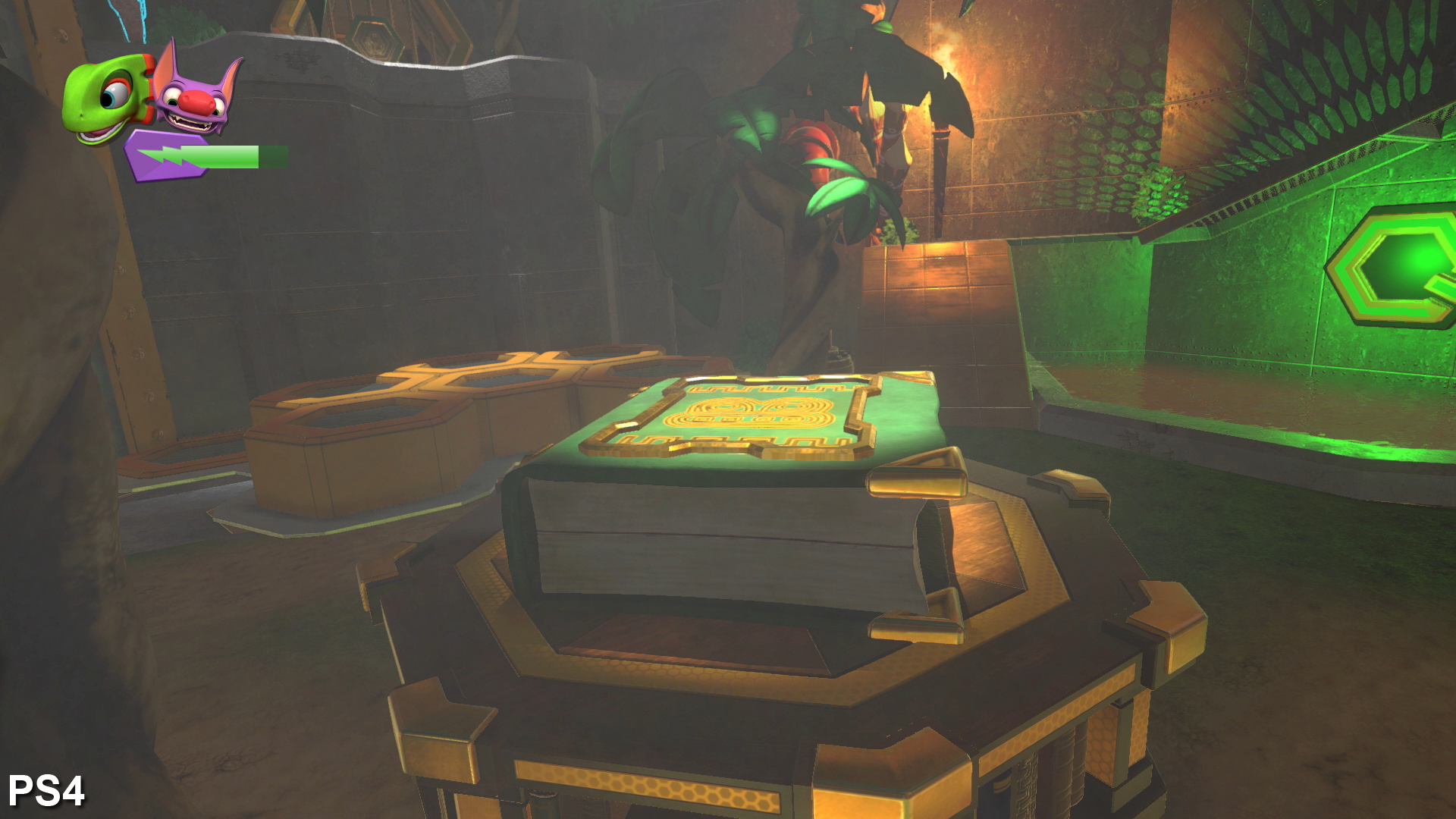

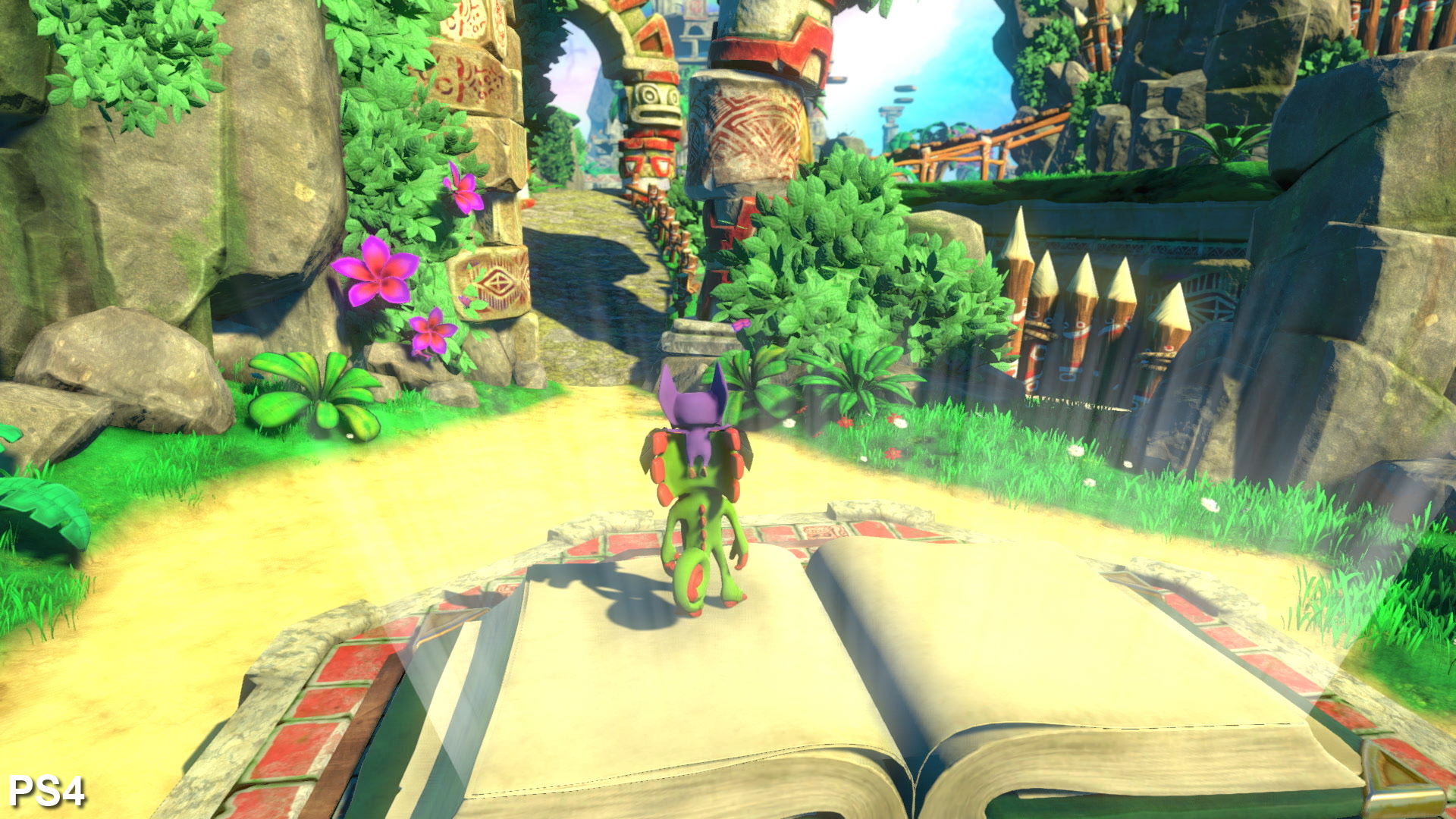

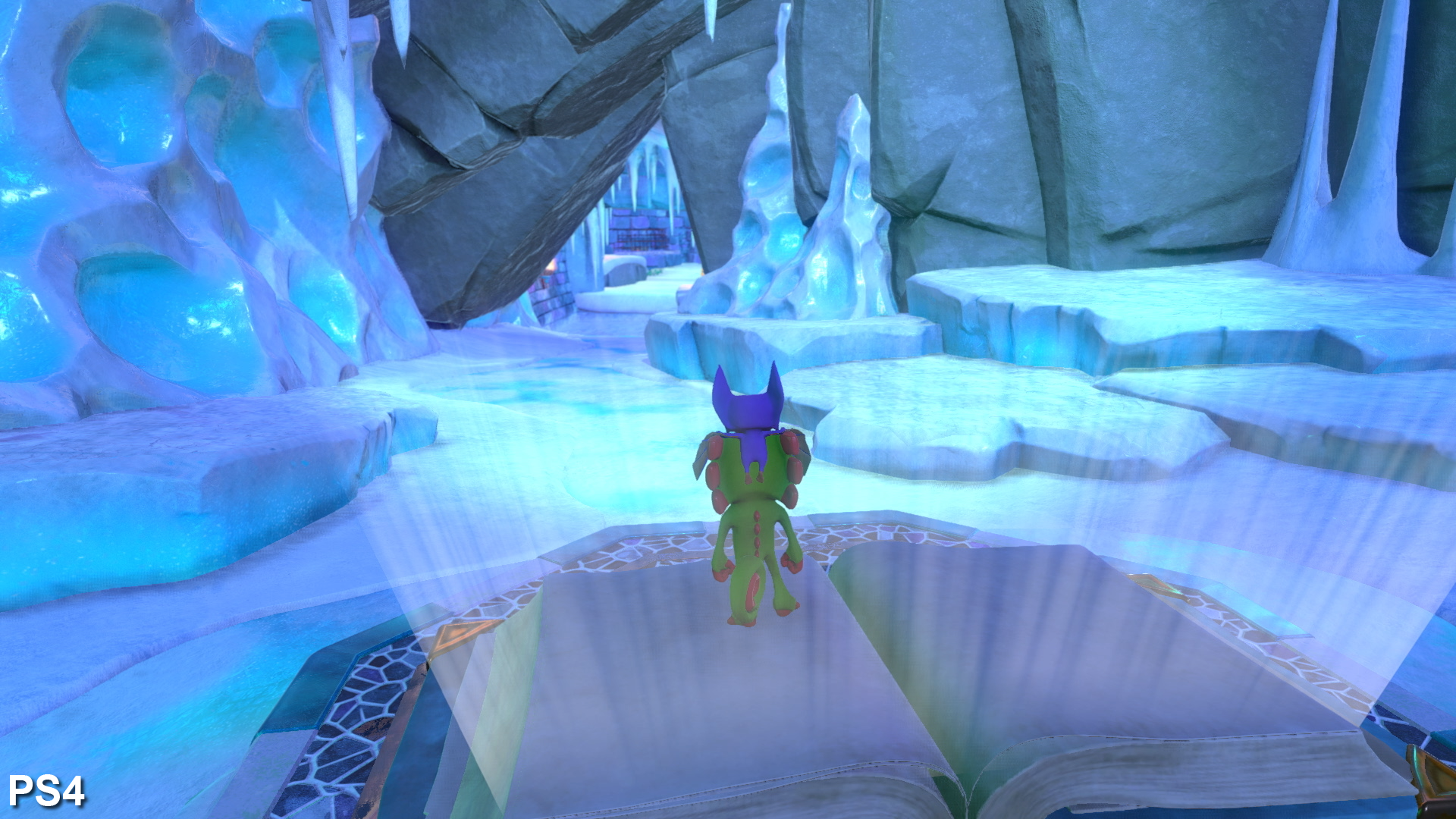
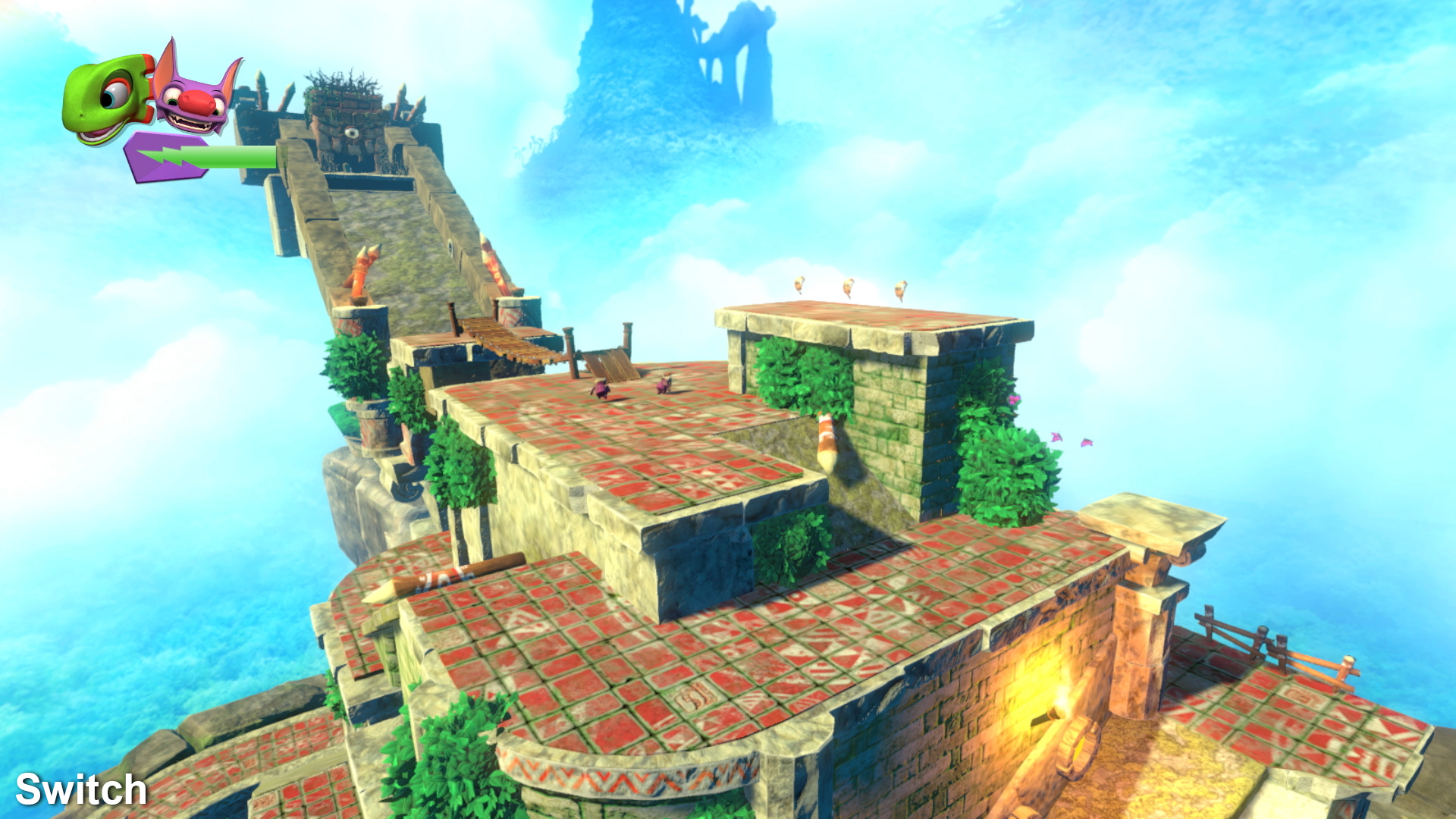
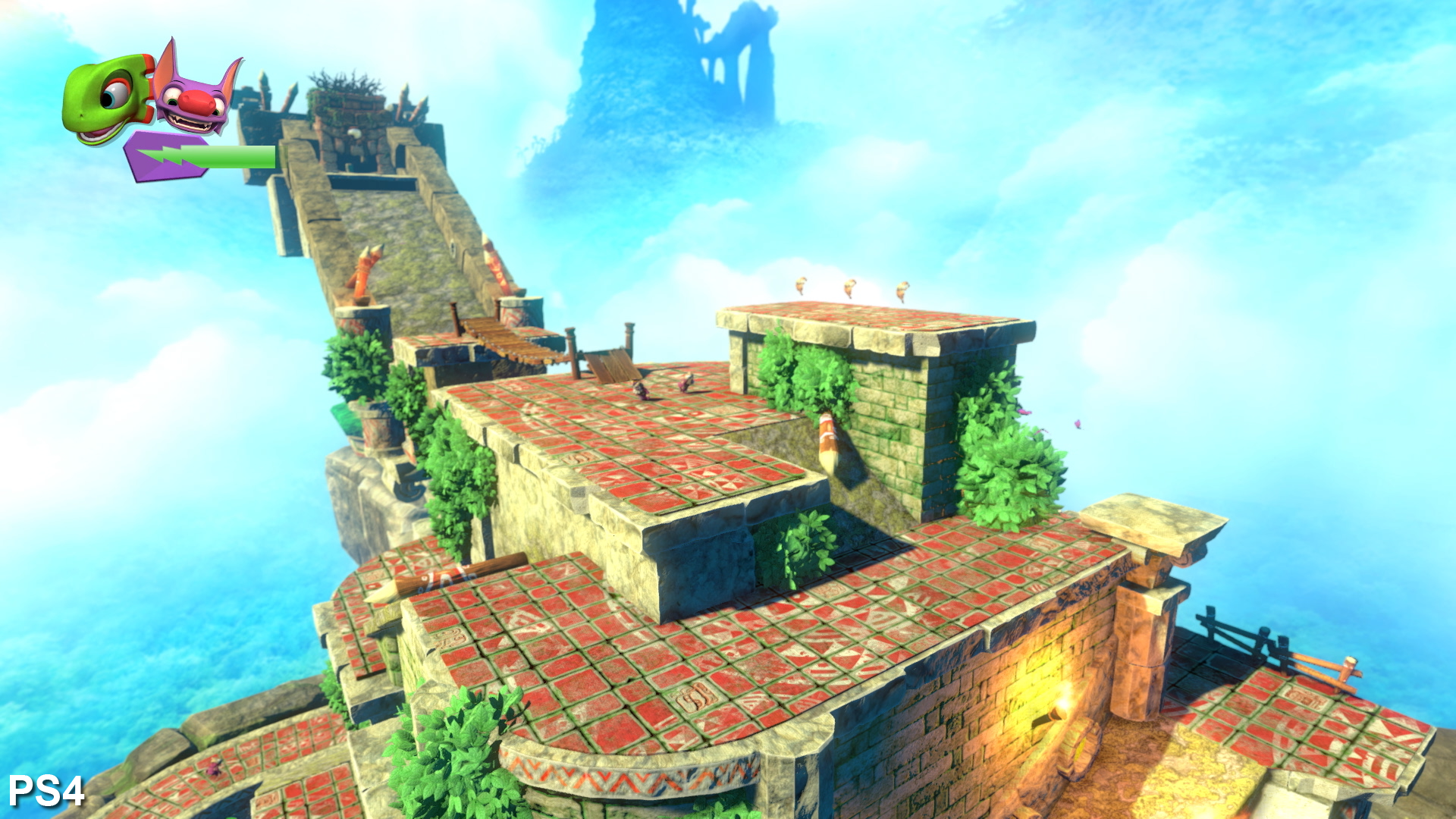
The waiting has paid off though. By and large, Yooka-Laylee presents a very stable 30 frames per second experience. There's no weird stuttering, hitching or any other performance problems that you might expect in a game like this. Yes, 60fps is always preferred in a platformer, but this is a 30fps game on other consoles and the Switch version follows suit. Traversal can see momentary dips in performance, and like the Xbox One version, more intensive use of alpha effects can also cause issues.
Still, despite these few drops here and there, the majority of the experience plays out at a locked 30 frames per second. Even better, it seems to run slightly smoother overall in handheld mode, not unlike other games we've seen on the Switch. And really, it's the portable experience that stands out here. This type of exploratory platformer makes for an amazing portable experience. It's easy to pick-up and start playing at any point while going for a goal of your choice, while the hardware's excellent sleep mode functionality makes it easy to dip in and out at will.
In the end then, Yooka-Laylee on Switch is an excellent port and one of the best examples of a large-scale Unity game on the system. Minor cuts are made in all the right places and frame-rate is kept mostly stable at 30fps. You'll definitely get the best overall performance on PS4 or Xbox One, but Switch manages to get very close, which is an impressive feat. It looks and plays well when docked, and while gaming on the go, it offers an experience the other consoles can't compete with.
The bottom line is that if you were on the fence with this game, or worried that it may not run well on Switch, you can rest easy - Playtonic's port is well worth your time. It's also a perfect way to finish off an incredible year on Switch for platform game fans. Between Super Mario Odyssey, Sonic Mania, Blaster Master Zero, Mighty Gunvolt Burst and Shovel Knight, the Switch has delivered a sensational line-up. Yooka-Laylee's Switch conversion is the icing on the cake.







